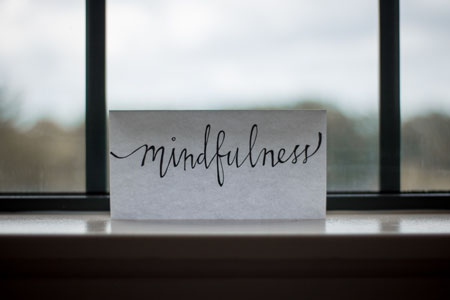Leadership Tips
- Enlightening
- Informative
- Thought-provoking
- Scientifically researched and data-driven
- Pragmatic and useful
- Pertinent and impactful
Techniques to help you deal with the physical impact of stress

Not all stressors are avoidable, but their influence can be buffered by adopting healthy coping strategies. Coping skills are like any other skill: The more you practice them, the more effective they will be.
Dealing effectively with stress is a four-step process:
- Step 1: Recognize the signs of stress. How do you feel when you're faced with a looming deadline, a frustrating client, or traffic? What kind of physical, emotional, and psychological symptoms do you experience? Whenever you're dealing with stress or any other negative state, it's important to stop and take a moment to examine what you are feeling rather than allow yourself to be overwhelmed with different sensations.
- Step 2: Identify the source of the stress. Is it something that you can control or is it out of your hands? It's important to gauge the controllability of the problem so you can use the appropriate coping technique.
-
Step 3: Evaluate the gravity of the stressor and its potential impact. Ask yourself these three questions:
- Is the stressor serious or am I making a big deal out of nothing?
- Will the impact of the stressor be positive (about to be promoted) or negative?
- Will the consequences of the stressor be short or long-term?
- Step 4: Decide on a course of action. Based on the information from the first three steps, determine the best approach to take. Can you let the stressor go and simply accept that it's there? If the answer is no, find a coping technique to help you deal with the issue.
Coping Techniques
Let's start with the physical symptoms. Distress is incompatible with calmness, which means that you can't feel stressed and calm at the same time. Here are some tips to reduce the physical impact of stress:
-
Deep breathing: When you're anxious or under stress, you are more likely to take shallow breaths. Breathing from your diaphragm is a simple yet effective technique to bring your body back to homeostasis, physiologically and emotionally.
- Sit comfortably and close your eyes (at your desk, in the bathroom, break room, or outside).
- Allow each part of your body to relax, starting from your head and working your way down to your feet.
- Take deep breaths. Breathe in through your nose for a count of 5, then slowly exhale from your mouth for a count of 5.
- Focus on the rise and fall of your diaphragm as you breathe in and out. If you find yourself being pulled away by a distracting thought, say "Be here now" to yourself. Don't get frustrated - just keep bringing your focus back.
- Keep this going for as long as you can (or until you achieve a sense of calm again).
- Exercise: Regular exercise not only promotes good health, it also helps you battle stress. Exercise releases tension as well as feel-good hormones. Try working out for a half hour or more at least 3 times a week. Choosing activities where you're outside with nature is also a naturally soothing experience.
- Meditation or yoga: These relaxing activities allow you to detach yourself from all the clutter filling your mind. They help you gain perspective and accept the present situation. You can also try "walking meditation," which combines the benefits of meditation with a change of scenery, fresh air, and a little bit of exercise. It involves walking slowly but very deliberately while breathing deeply, so that every breath in, you take 3 or so steps, and for every breath out you take 3 or so steps.
- Mindfulness: Try playing this simple yet surprisingly effective game to calm your nerves and stay focused on the present moment. For each letter of the alphabet, try to come up with a word or short phrase that is synonymous with calmness. For example: "All is well," "Blissful," "Composed," "Docile," "Easygoing," "Fluid," "Gentle," etc. Soon enough, you'll be so focused on trying to come up with words that you won't be thinking about the situation that is stressing you out.
- Visualization: When athletes use visualization as part of their training, they imagine themselves engaging in their sport. Runners visualize themselves running a race from start to finish; hockey players visualize themselves scoring; gymnasts visualize themselves going through each part of their routine. Essentially, they visualize themselves completing a goal successfully. What's interesting about visualization is that your mind and body cannot tell whether you are just visualizing the experience or actually going through it. If you have to deal with a situation or problem that is stressing you out, visualize yourself accomplishing it successfully. When you prime your mind and body for success, you are more likely to achieve it. What you visualize, you materialize.